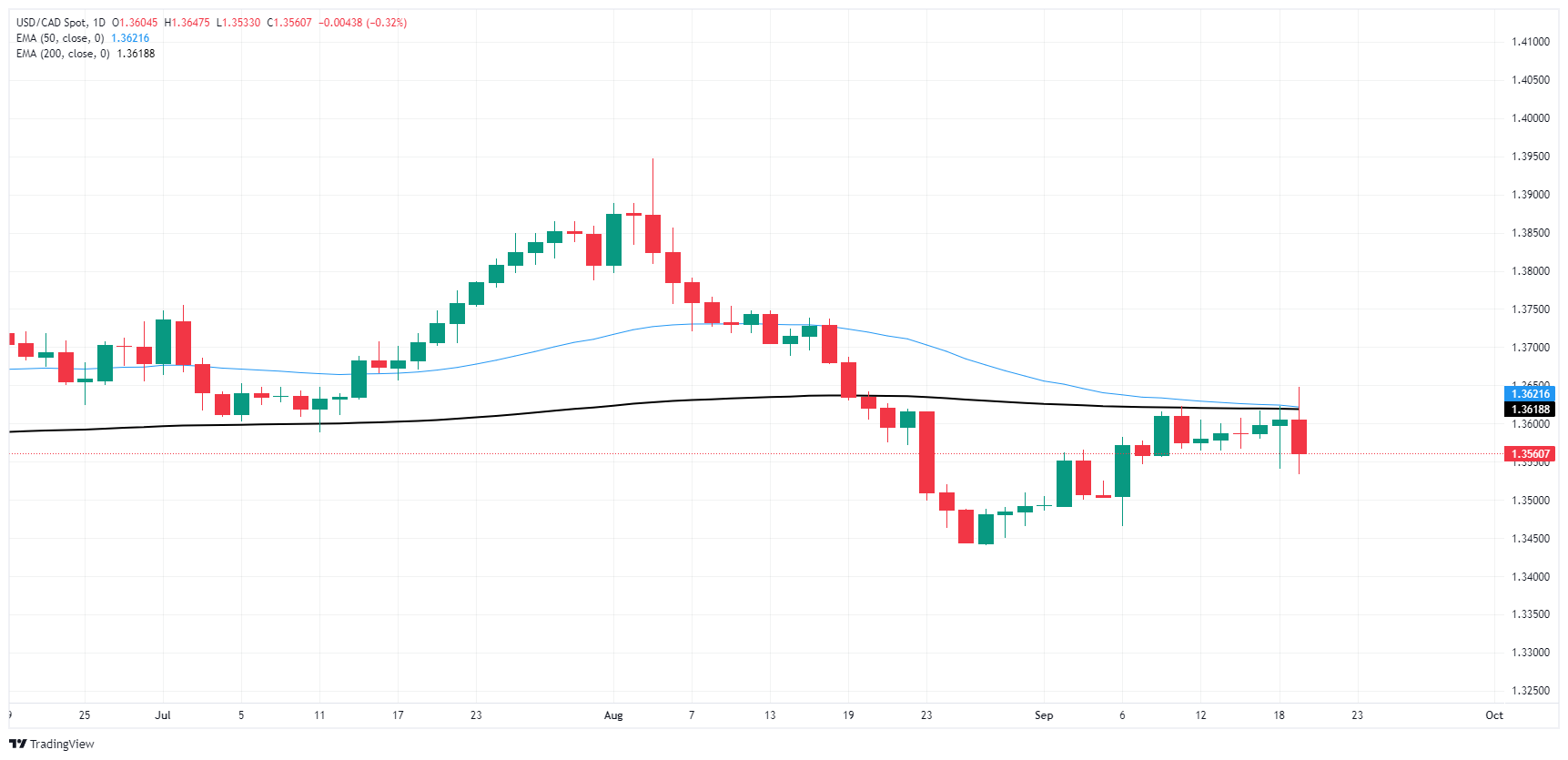Canadian Dollar gets a push from Fed cuts but still hobbled
- The Canadian Dollar was given a boost from Fed-weakened Greenback.
- Canada remains under-represented on the economic calendar.
- Broader markets remain more interested in other avenues following Fed cut.
The Canadian Dollar (CAD) remains overall weaker on Thursday, though the CAD was able to eke out a stronger stance against the Greenback, with the USD getting pummeled after the Federal Reserve (Fed) cut interest rates for the first time in four years by an outsized 50 bps.
Canada is in a lull between key data releases after having printed the latest Consumer Price Index (CPI) figures earlier in the week. All that remains on the economic data docket for the CAD this week is Friday’s mid-tier Retail Sales figures from July, far too late for anybody to do anything about it. Bank of Canada (BoC) Governor Tiff Macklem is also slated to make an appearance on Friday, but the limited scope of the speech is unlikely to draw much bluster.
Daily digest market movers
- The Canadian Dollar is overall weaker on an under-performing Thursday, but still managed to eke out roughly one-third of one percent against the US Dollar.
- The Fed’s 50 bps jumbo cut this week was sold as a “recalibration” by Fed Chair Jerome Powell, who spun it as an advance move to shore up the US labor market, rather than a snap reaction to deteriorating economic indicators in the US.
- The BoC’s Governor Macklem will be giving a speech early Friday at the National Bureau of Economic Research Economics of Artificial Intelligence Conference, in Toronto. It is unlikely that much discussion of monetary policy will come out of it.
- Canadian Retail Sales from July are expected to hold steady on an annual basis of around 0.3% YoY.
- Canadian CPI figures released earlier this week did little to galvanize market confidence in the state of the Canadian economy after headline inflation sunk to 2.0% YoY from the previous 2.5%.
Canadian Dollar price forecast
The Canadian Dollar found a little bit of juice to gain ground against the Greenback on Thursday, gaining around 0.35%, but any CAD strength is purely a result of USD selling and hasn’t bled over to any other major currencies. USD/CAD has eased lower on broad-market risk appetite, pulling the pair down from recent congestion just south of the 200-day Exponential Moving Average (EMA) near 1.3600.
However, extended short pressure remains a risky play with the pair trading so close to August’s swing low into 1.3450, and the high side looks equally over-populated as technical resistance remains stiff above 1.3600.
USD/CAD daily chart
Canadian Dollar FAQs
The key factors driving the Canadian Dollar (CAD) are the level of interest rates set by the Bank of Canada (BoC), the price of Oil, Canada’s largest export, the health of its economy, inflation and the Trade Balance, which is the difference between the value of Canada’s exports versus its imports. Other factors include market sentiment – whether investors are taking on more risky assets (risk-on) or seeking safe-havens (risk-off) – with risk-on being CAD-positive. As its largest trading partner, the health of the US economy is also a key factor influencing the Canadian Dollar.
The Bank of Canada (BoC) has a significant influence on the Canadian Dollar by setting the level of interest rates that banks can lend to one another. This influences the level of interest rates for everyone. The main goal of the BoC is to maintain inflation at 1-3% by adjusting interest rates up or down. Relatively higher interest rates tend to be positive for the CAD. The Bank of Canada can also use quantitative easing and tightening to influence credit conditions, with the former CAD-negative and the latter CAD-positive.
The price of Oil is a key factor impacting the value of the Canadian Dollar. Petroleum is Canada’s biggest export, so Oil price tends to have an immediate impact on the CAD value. Generally, if Oil price rises CAD also goes up, as aggregate demand for the currency increases. The opposite is the case if the price of Oil falls. Higher Oil prices also tend to result in a greater likelihood of a positive Trade Balance, which is also supportive of the CAD.
While inflation had always traditionally been thought of as a negative factor for a currency since it lowers the value of money, the opposite has actually been the case in modern times with the relaxation of cross-border capital controls. Higher inflation tends to lead central banks to put up interest rates which attracts more capital inflows from global investors seeking a lucrative place to keep their money. This increases demand for the local currency, which in Canada’s case is the Canadian Dollar.
Macroeconomic data releases gauge the health of the economy and can have an impact on the Canadian Dollar. Indicators such as GDP, Manufacturing and Services PMIs, employment, and consumer sentiment surveys can all influence the direction of the CAD. A strong economy is good for the Canadian Dollar. Not only does it attract more foreign investment but it may encourage the Bank of Canada to put up interest rates, leading to a stronger currency. If economic data is weak, however, the CAD is likely to fall.
